TIPS, TRICKS & HOW-TOs
The Bendy Blog: Flexibility Training Articles
Filter posts by topic:
All Posts / Bridges / Contortion / Front Splits / General Back Flexibility / General Flexibility Tips / General Lower Body Flexibility / Middle Splits / Neurodynamics / Shoulders / Straddles / Yoga /
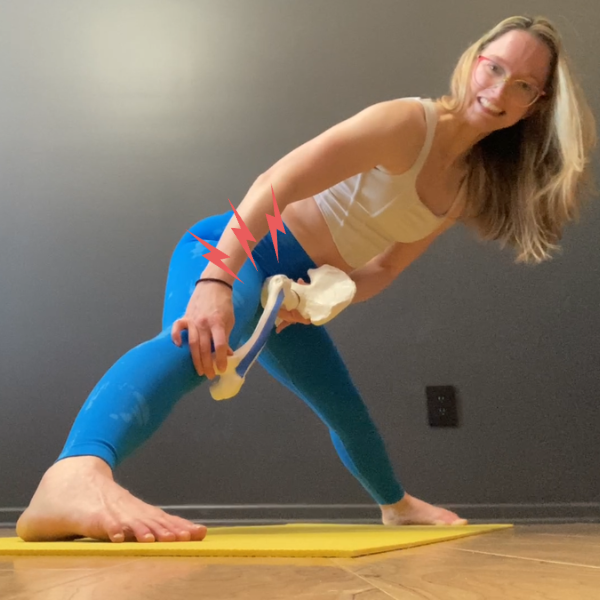
Help! My Hips Hurt in My Middle Split and Frog Stretch
This is a question I frequently get in group classes as well as private lessons - there are some people out there that, based on their hip anatomy, have a hard time feeling inner thigh stretches in things like straddles, middle splits, and frog stretches. Instead, they feel like their legs just get “stuck” when trying to open them out to the side, or may even feel a “pinch” in the front or side of their hip. This can be frustrating because no matter how much you try to stretch, you don’t see any progress in your middles or straddles.
Now what if I told you the solution to this flexibility plateau was NOT trying to push the stretch deeper?
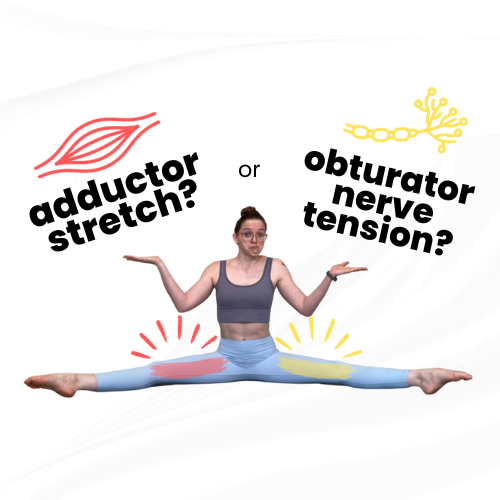
Obturator Nerve Tension Test & Nerve Glide
Obturator nerve tension refers to a situation where the obturator nerve, one of the main nerves that goes through our inner thighs, is prevented from sliding like it’s normally supposed to and instead tugged into a position of too-much-tension when we try to stretch our adductors (inner thigh muscles). This can be tricky because it may feel a whole lot like muscle tightness, so it’s important to be able to recognize whether the inner thigh “tightness” or “stretching” sensation you are feeling is actually a muscle stretch (good!) or nerve tension (probably less productive) - so let’s talk about how to figure that out!

I Can Open My Hips in a Frog Stretch, But Not Middle Splits - What Gives?
Do you find it pretty easy to open your legs out to the sides in a frog stretch, but when you try to open your legs in a middle split or a straddle, your legs don’t go nearly as far (and it feels waaaaay harder)? They’re both inner thigh stretches, so what gives?
(Spoiler alert: it’s probably your gracilis)

Point or Flex? Protecting Your Ankles in Middle Splits
Unless you have totally flat middle splits on the floor, I strongly recommend flexing your feet, and keeping the outside edge of your foot lifted. Why? Because that mimics the most “neutral” position of your ankle, so puts the least strain on your ligaments and connective tissue (while in a relatively “heavy” bodyweight-bearing position). Let’s take a look at several foot positions in a not-yet-flat middle split so you can see for yourself…

“Proper” Hip Alignment for Middle Splits
The position and orientation of our pelvis can have a big impact on the effectiveness of the stretch we’re getting in poses like middle splits or frog stretches. A couple of variables we want to consider are: hip-knee alignment, thigh rotation, pelvic tilt, and torso position. A “traditional” middle split calls for neutral hips, hip bones facing the floor, knees and thighs facing forwards, and torso parallel to the floor - but that isn’t the “only” way to do a middle split, nor is it necessarily the “best” way to do it if that doesn’t fit your hip anatomy.
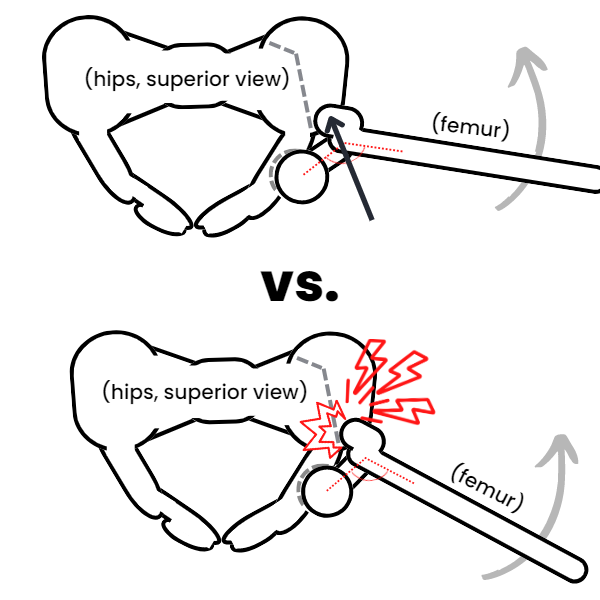
Is It Anatomically Possible for Me to Do the Middle Splits?
You may have heard that some people have a hip anatomy/structure that makes it impossible for them to ever do flat middle splits. You may have even seen a common test (spoiler alert: this “test” is crap) to show whether or not you have a boney limitation that would make middle splits impossible for you. In this post we’ll explore hip anatomy variations and their implications on our middle splits.

Help! My Outer Hips Hurt When I Straddle
Straddles, like middle splits, are mainly meant to stretch your adductors (inner thigh muscles) and/or your hamstrings if you’re taking it into a straddle pancake forward fold - so if you’re feeling pain or discomfort in the outside of your hips, and not a stretching sensation on your inner thighs, something needs to change!

Middle Split Oversplits: A Primer on Technique
I’m not going to lie - I have a love/hate relationship with middle oversplits. I love how big a difference they can make in how comfortable my “regular” middle splits feel. But I hate how the oversplits feel when I practice them (personally, I think they’re hard AF compared to front leg oversplits, but that’s how I’ve always felt about middle vs. front splits). But despite them being an exercise I minorly dread, I think they’re an important tool for students who have very middle split-y aspirations. Just like with front splits and front oversplits, middle oversplits can be a sneaky way for students who are oh-so-close-to-flat to challenge their hips a tiny bit more to help them touchdown.
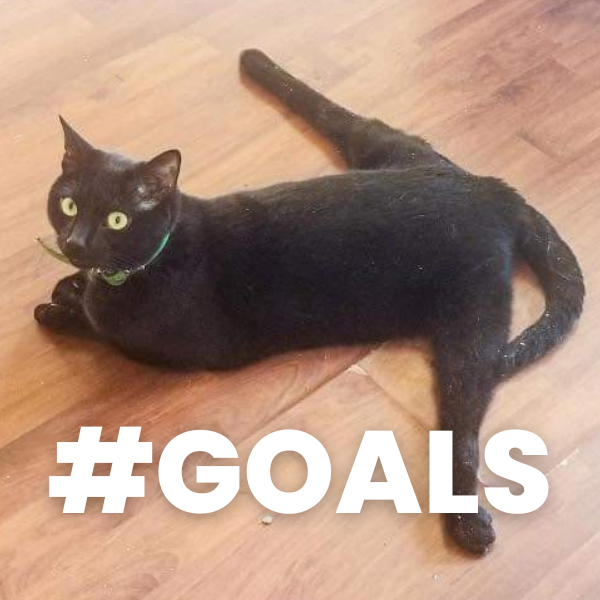
How to Flatten Your Middle Splits
Just like with front splits, the last couple of inches in your middle splits can feel like the most challenging to train. If you feel like you’ve hit a plateau and are “stuck” in your middle split training, it’s time to re-assess your training.
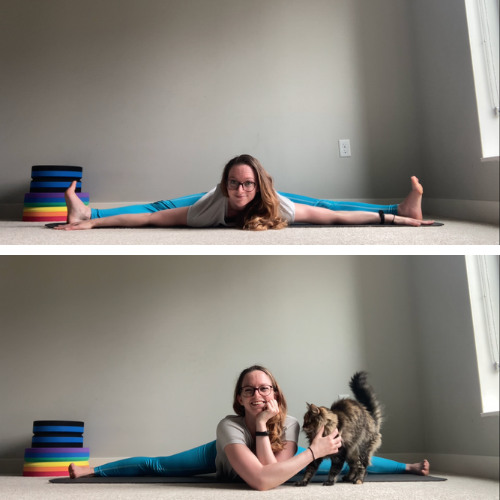
Straddle vs. Middle Split - What’s the Difference?
Having dabbled in the wide world of contortion training for 11+ years now, I’ve come to learn that there are some serious inconsistencies in naming conventions for stretches/poses. But when it comes to straddles and middle splits, all instructors can agree that these are distinctly different poses. Why does that matter to you? It influences what muscles you need to train to be able to do them, and informs the “proper” form for safely working on your hip flexibility for these shapes.
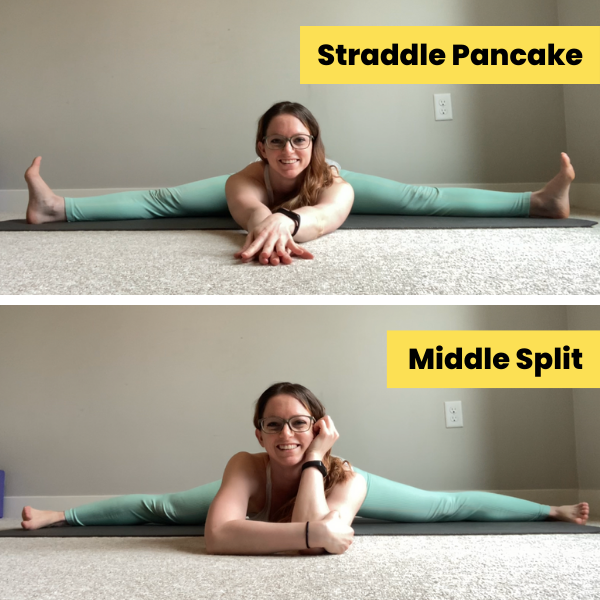
10-Minute Middle Split & Straddle Routine
This post is a long overdue follow up to my 10 Minute Front Splits Routine post from a couple of years ago. Below is a nice short stretching routine that’s a great foundation for working on your straddles and middle splits. Because both straddles and middle splits require inner thigh flexibility (quite a bit) and hamstring flexibility (straddle pancakes require a lot, middle splits just a little) - it’s helpful to work on them both at the same time.

Knee Pain in Middle Splits? Try These Adjustments
If you experience knee pain when practicing your middle splits, you’re not alone. It’s not uncommon for new practitioners to feel some discomfort in their knees - and I’m not talking about “good stretch” discomfort. So you’re wise to learn what’s going on to fix this issue!

